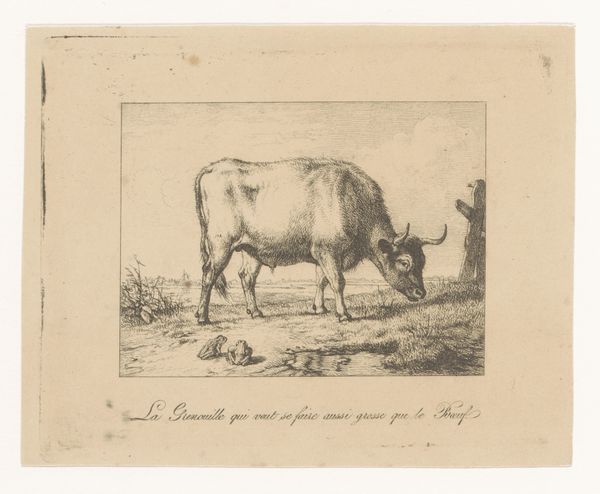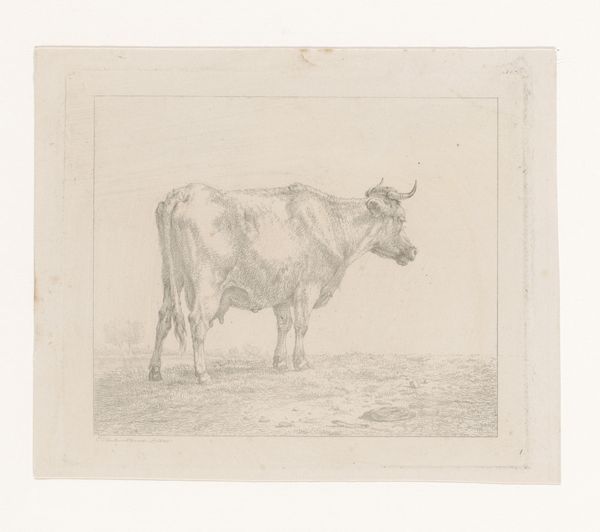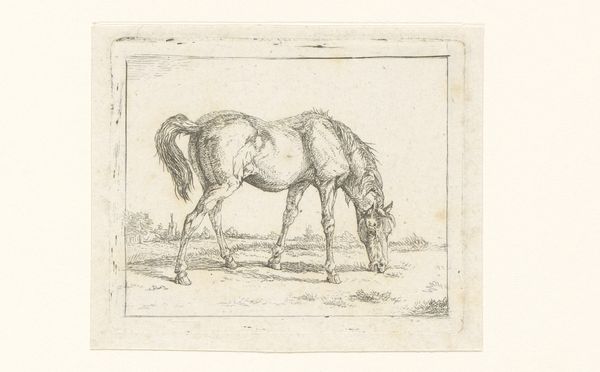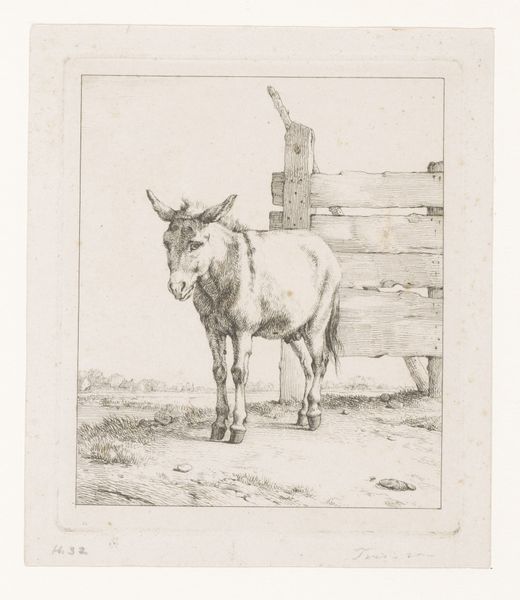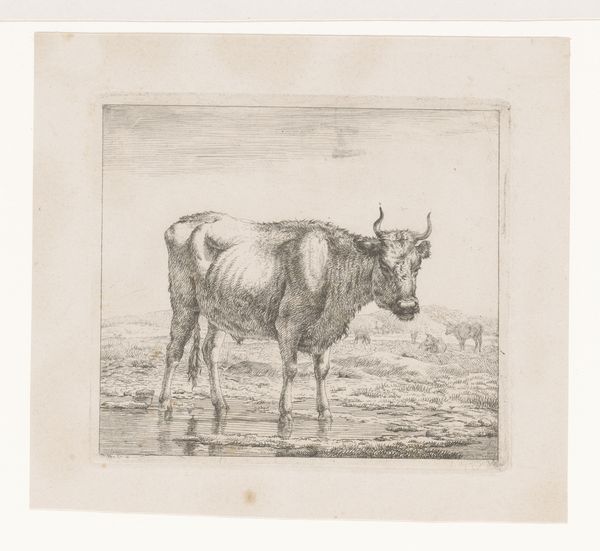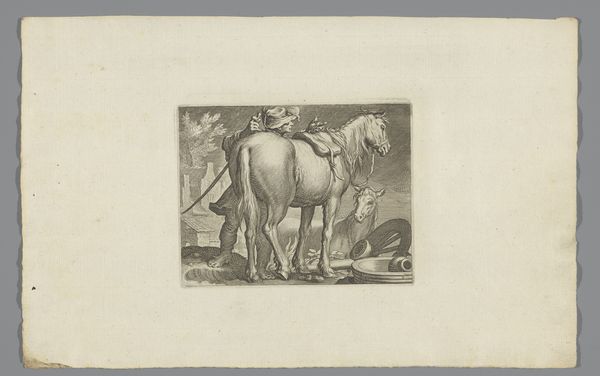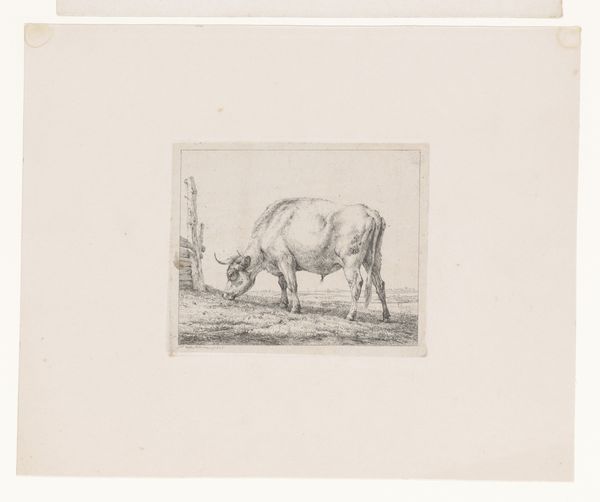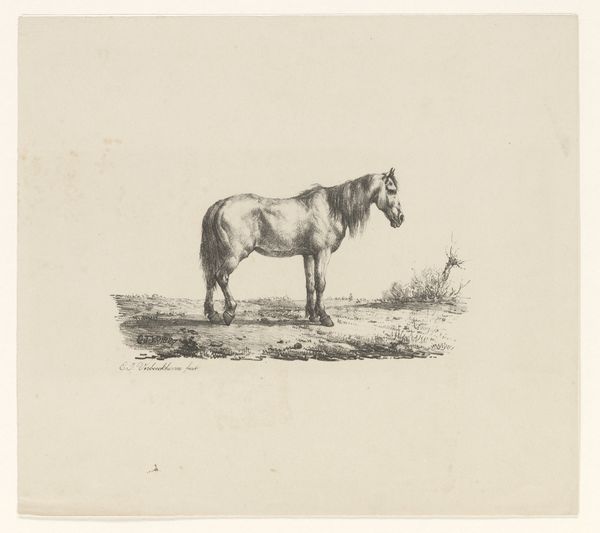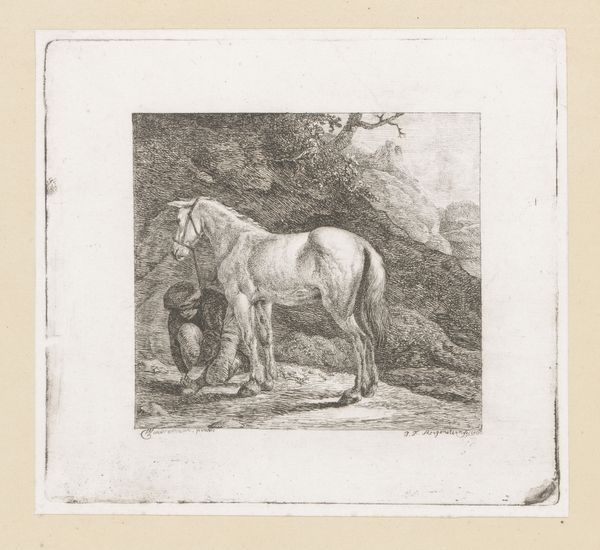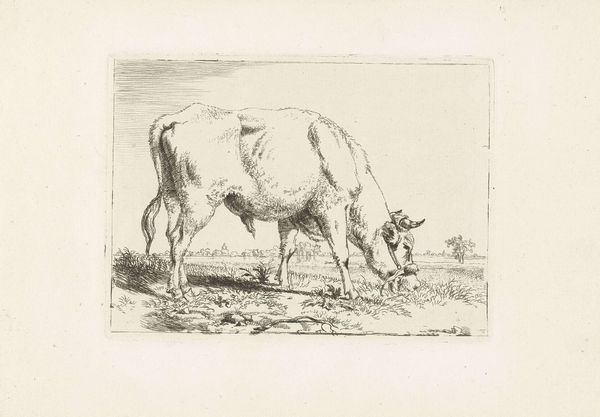
drawing, etching, paper
#
portrait
#
drawing
#
ink drawing
#
animal
#
etching
#
landscape
#
etching
#
paper
#
romanticism
#
realism
Dimensions: height 107 mm, width 127 mm
Copyright: Rijks Museum: Open Domain
This small etching, "Ezel", or "Donkey," was made by Eugène Verboeckhoven, a Belgian artist known for his animal paintings. The image of the donkey in 19th-century Belgium conjures specific social and economic contexts. Donkeys were working animals, vital for transport and agriculture, but also symbols of poverty and the toils of the working class. Verboeckhoven’s choice to depict this animal is telling; he often portrayed farm animals, reflecting the rural character of Belgium at the time. Was he celebrating an integral part of the nation’s economy? Or perhaps commenting on the social inequalities inherent in a society dependent on animal labor? The institutional history of the Rijksmuseum is crucial as well. As a national museum, how does its collection reflect and shape narratives about Dutch identity and history? To fully understand this artwork, we can turn to agricultural records, social histories, and even literature from the period. Through historical research, we can begin to understand the complex social and economic meanings embedded within this seemingly simple image.
Comments
No comments
Be the first to comment and join the conversation on the ultimate creative platform.
